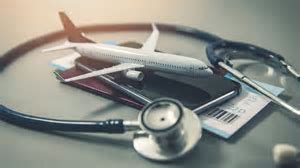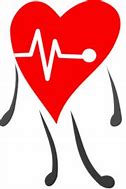
Cancer: Risk Factors Within Our Control
There is no question, the fear and anxiety associated with cancer is real and while there are several risk factors that are not within our control (age, genetics, etc.), there is good news about how we can pro-actively lower our risks for many types of cancer.
The American Cancer Society’s (ACS) Cancer Prevention Blueprint describes controllable risk factors for cancer and outlines prevention strategies that have proven to help lower their risk factors for certain cancers, by making good lifestyle choices. It suggests that people who adopt a healthy lifestyle and stick with it may help reduce their risk of getting cancer. Here are some of the modifiable risk factors outlined in the document that, if practiced, can lower your risk for a variety of cancers.
Tobacco
Tobacco use remains the most preventable cause of death in the US. Despite decades of declines in cigarette smoking it is still the leading cause of cancer prevalence; about 30 percent of all cancer deaths is attributed to tobacco, and the most preventable cause.
Cigarette smoking increases the risk of at least 12 cancers: oral cavity and pharynx, lung, esophagus, pancreas, uterine cervix, kidney, bladder, stomach, colorectum, liver and myeloid leukemia. Smoking may also increase the risk of fatal prostate cancer as well as a rare type of ovarian cancer. Health consequences increase with both the duration of smoking and the number of cigarettes smoked.
In addition to cancer, smoking can also lead to many other chronic diseases including breathing problems such as asthma and chronic obstructive pulmonary disease (COPD), heart disease, type 2 diabetes, stroke, and even eye problems that can result in blindness. Non-smokers are less likely to get these diseases.
Alcohol
An estimated six percent of cancer cases can be attributed to alcohol consumption. Alcohol consumption increases the risk for cancers of the mouth, pharynx, larynx, esophagus, liver, colorectum and female breast. Heavy drinking (more than three drinks per day) may also increase the risk of stomach and pancreatic cancer.
The risk of cancer increases with the volume of alcohol consumed however, for women, even a few drinks per week may be associated with a slightly increased risk of breast cancer.
If you choose to drink alcoholic beverages, ACS recommends:
- Women should have no more than 1 drink a day.
- Men should have no more than 2 drinks a day. Excess Weight It is estimated that cancers – five percent of cancers in men and 11 percent in women – can be attributed to excess body weight. According to the International Agency for Research on Cancer, excess body fatness, i.e. , being overweight or obese, is associated with an increased risk of developing 13 cancers: uterine corpus, esophagus (adenocarcinoma), liver, stomach (gastric cardia), kidney (renal cell), brain (meningioma), multiple myeloma, pancreas, colorectum, gallbladder, ovary, female breast (postmenopausal) and thyroid. Additionally, limited research, suggests that excess body weight may also increase the risk of non-Hodgkin lymphoma (diffuse large B-cell lymphoma), male breast cancer, fatal prostate cancer and negatively impact survival for breast cancer. Being overweight or obese can increase the risk of cancer in many ways, but the main reason is because excess weight causes the body to make and circulate more estrogen and insulin; both these hormones can make it easier for some cancers to grow. It is still being studied whether adults who are overweight or obese can reduce their chances of getting cancer if they lose weight. However, what research has shown is that losing weight lessens your chances of getting some other chronic diseases. And some of those diseases, if not managed, such as diabetes, may increase your chance of getting some types of cancer. Diet The saying, “We are what we eat,” is applicable as another cancer lifestyle risk factor. Approximately 4 to 5 percent of all cancer cases and deaths can be attributed to dietary factors. Healthy dietary patterns and regular physical activity are both important for maintaining a healthy body weight and reducing cancer risk.
Studies show that diets high in red and processed meat, starchy foods, refined carbohydrates and sugary drinks are associated with a higher risk of developing cancer (predominantly colon). Whereas diets with an emphasis on a variety of fruits and vegetables, whole grains, legumes, fish or poultry and fewer red and processed meats are associated with lower risk. Physical Activity It is estimated that three percent of cancer cases can be attributed to physical inactivity. Research is showing convincing evidence that physical activity decreases the risk of colon (but not rectal) cancer and probably decreases the risk for endometrial and postmenopausal breast cancer. More evidence is suggesting that physical activity may also reduce the risk of other cancers including (but not limited to) esophageal, liver and premenopausal breast cancers. Studies in this area are ongoing and there is more evidence indicating that physical inactivity is identifying higher risks for several other cancers.
It is also worth noting that cancer patients who are physically active are less likely to have adverse effects from their treatments than those who are inactive.
Here’s what the American Cancer Society recommends for adults and children:
- Adopt a physically active lifestyle
- Limit the amount of time you’re inactive. This includes the time you spend sitting or lying down to watch TV or other types of screen-based entertainment.
The good news is that doing any kind activity beyond your usual activities can be beneficial to your health.
While we cannot manage some of the risk factors we’re dealt – age, genetics, etc. – it is promising to learn how we can reduce our risks by making better lifestyle choices. Behavioral choices can have a positive (or negative) effect on our overall health and lower our risks of cancer. Prevention through lifestyle behaviors has the potential to substantially reduce the number of people diagnosed with and dying from cancer each year.
If you are having trouble modifying any of these risks talk to your doctor about programs that can help you. Many of these, such as tobacco and alcohol and eating may take many attempts; but don’t give up because the risks are too great.



